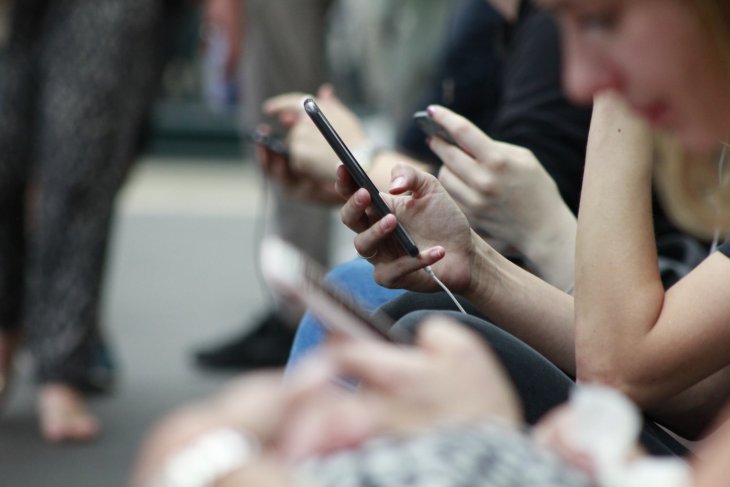When I observe the surveillance and disciplinary measures spreading together with COVID-19, questions arise. It is not just professionals who should have the answers.

Photo: Robin Worrall on Unsplash
Everyone asks themselves where this pandemic is headed. That is probably why the road towards monitoring measures is short, and often necessary. After all, a virus combines many aspects that nurture our desire to control and be controlled: it is somewhat intangible, but potentially deadly. These days, we experience many measures that seem well-thought-through, that save lives and prevent the exponential growth of the crisis. The situation is exceptional and critical. That is exactly why the handling of this situation needs our critical view.
With a mixture of empathy and concern I follow the development of digital measures in the “war against corona”. One of the first actions could be seen in China, where Alipay Health Code is used to indicate if people need to stay in quarantine. It is likely that information is not only shared with app owners, but also with the police. How the system “discriminates” – how it makes decisions and about whom, is unclear. Meanwhile, South Korea is tracking bank cards and mobile phones to find out who should be tested for COVID-19.
Now the Norwegian Institute of Public Health (FHI) is developing an app to track patterns of movement. This is nothing radically new: data tracking and the analysis of personal information is used every day to optimize our trips home, improve our eating habits, and manage our security. These methods of data tracking, however, are changing society and social interactions.
It is not well-studied to what extent the tracking of mobile data and the collaboration with secret services helped containing the spread of COVID-19 in other countries. What is well documented is that the development and use of new tracking technologies is complex. This complexity is often not sufficiently reflected about before new technologies are implemented. Even though the work on the Norwegian app is being presented as a “test” (Gun Peggy Knutesen, FHI), as explorative and entirely voluntary, we should pause to question the politics of such technologies already when solutions are being designed. If the analysis of our movements is part of a “dugnad” – a collective action for the greater good – (Fredrik Syversen, IKT Norge), we should all be asking what that digital collective action really entails.
a virus combines many aspects that nurtures our desire to control and be controlled: it is somewhat intangible, but potentially deadly.
Building a database
In order to analyze peoples’ movements digital data needs to be tracked and stored. It is, however, not clear where this data comes from – to what extent health authorities, technology – and service-providers, and not least ourselves are a part of creating the very basis for the tracking of infection. The app’s results are highly dependent on those who create data, as well as those who decide which data is considered relevant, critical or valid. From other surveillance measures in the security sector we know that there is a tendency to never consider datasets complete. This creates a tendency to always collect more data. How far are we then from combining data from different sources? Will apps developed during crises encourage data reuse, where data created in one context is suddenly used in another? We should not forget that regulations for data collection, storage, access and deletion are a part of deciding how information about us moves in society – also in the future.
Data analysis
One aspect of an app is the generation of data and the regulation of data storage. Another important dimension is the analysis of such data. Here we need to ask ourselves carefully what kind of patterns are actually supposed to be identified. Even if data analysis is “only” about people’s movements, so are our movements still a very basic part of society and of ourselves. Movement or mobility is already being tracked in numerous security contexts, from migration to more abstract transactions. That begs the question as to how we will separate certain forms of movement and social contact from others? Or to pose the question differently: what kinds of movement and social contact need to be tracked in order to identify infection? What needs extra attention here is the ways in which the surveillance of movement conducted in one context is used for other purposes over time.
An equally pressing question is how this surveillance actually affects people’s mobility. What does it mean, both practically and politically, that the movement of individuals can and will be tracked?
Apps in action
The most important aspect to assess is what an apps like these can do to societal life. It is hard to anticipate the social processes that follow from this kind of tracking of human contact – from tracking “the social”. How, for example, will we judge people who refuse to be part of this collective action? Are they for or against a healthy society? Technologies like these are designed to save lives. At the same time, we are moving towards a surveillance of “life itself” by analyzing social, biological, and health data.
States of exception are known to spark innovation, but they also create an acceptance for more invasive control measures. Technological innovations may allow us to gather crucial insights, but at the same time they lead to an expansion of data tracking. Where are we headed when we seek to find a balance between control measures and a healthy society?
- This piece originally appeared in Dagsavisen with the title “Smittesporing – hvor er vi på vei?”. Read it in the original Norwegian here.
- Translation: Indigo Trigg-Hauger